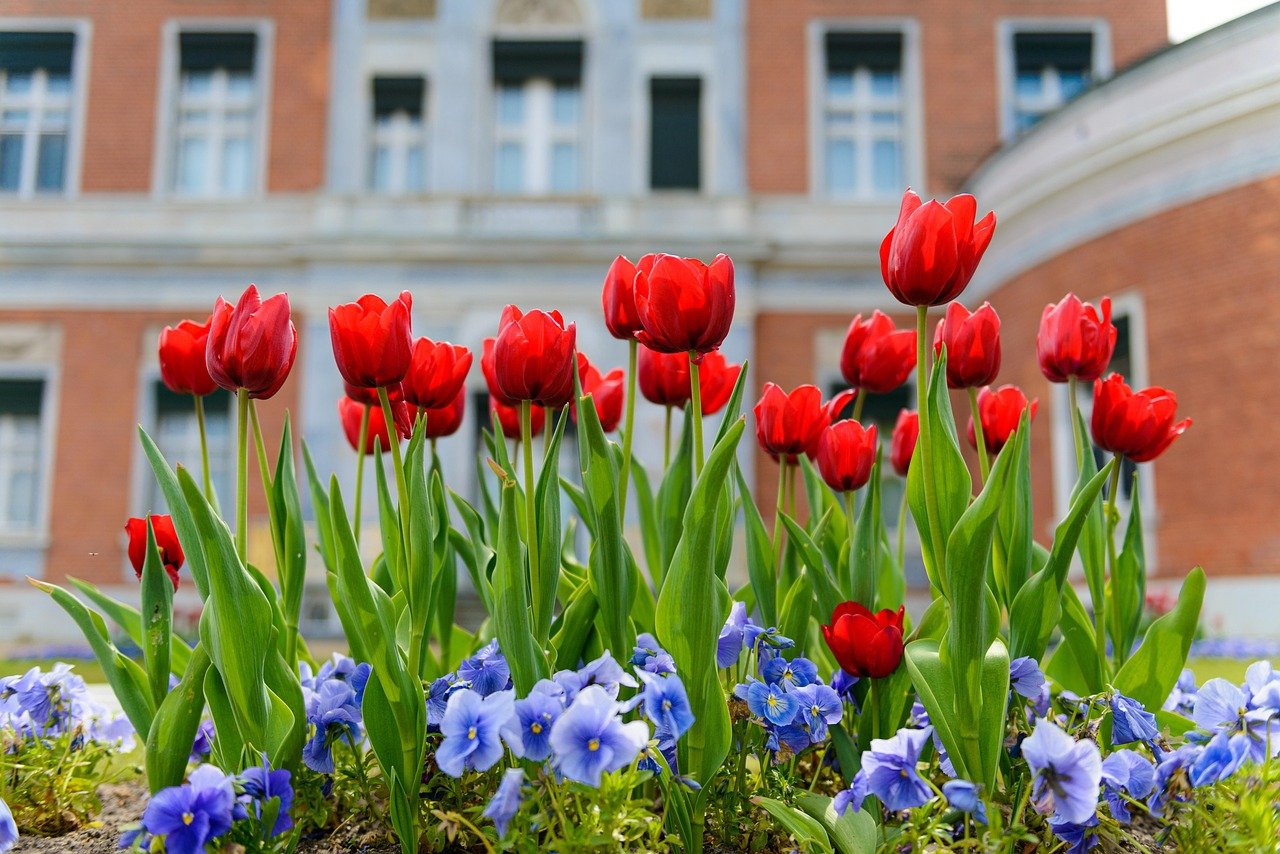Creating a vibrant flower bed in a sun-drenched yard is one of the best ways to add beauty, color, and life to your landscape. Full sun areas, which receive six or more hours of direct sunlight a day, provide the perfect opportunity to showcase a wide array of blooms that love the heat and light. However, planning a flower bed in these conditions requires a thoughtful approach to plant selection, layout, and maintenance.
This guide shares 15 stunning full sun flower bed ideas to inspire your next gardening project. Whether you’re drawn to formal gardens, whimsical wildflower beds, or edible blooms, these ideas will help you craft an outdoor space that thrives under the sun.
1. Classic Cottage Flower Bed
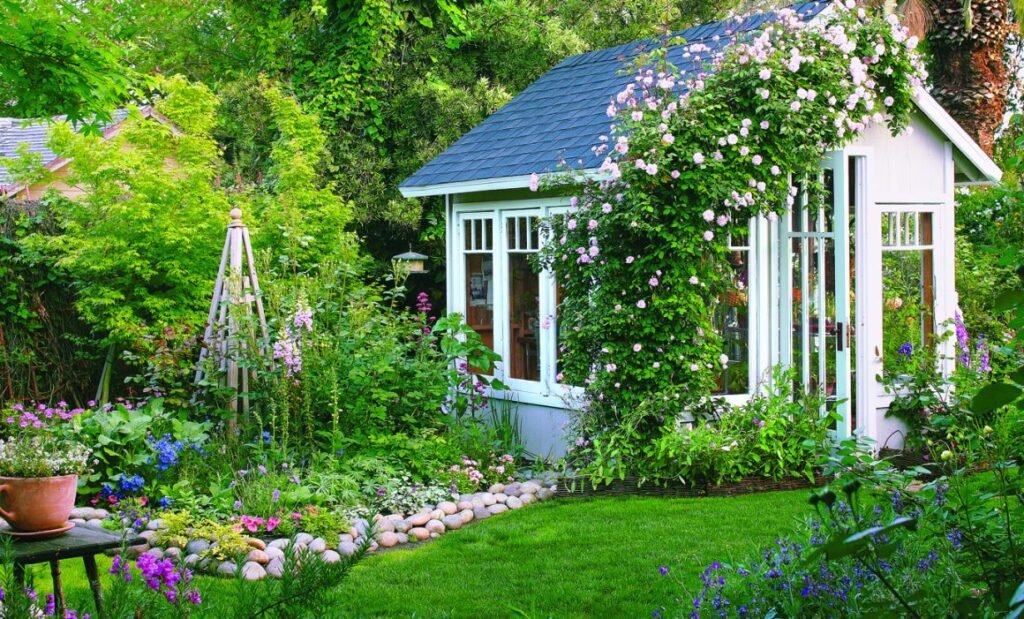
A classic cottage flower bed is ideal for full sun spaces because it embraces a diverse mix of perennials and annuals that bloom profusely in bright light. Think of a loosely organized display bursting with cheerful blooms and layers of color and texture. The key to a successful cottage-style bed is mixing heights and colors in an informal layout.
Popular plants for a cottage flower bed include Shasta daisies, salvia, lavender, hollyhocks, and coreopsis. These flowers not only tolerate full sun but actually perform their best with abundant sunlight. You can intersperse climbing roses or clematis on trellises to add vertical interest and charm.
To keep your cottage flower bed looking its best, regularly deadhead spent blooms and mulch well to retain moisture. Consider placing taller plants toward the back and letting lower growers spill toward the front. This creates a dynamic, full-bodied look that changes with the seasons.
2. Drought-Tolerant Xeriscape Bed

For gardeners in arid climates or anyone looking to conserve water, a drought-tolerant xeriscape flower bed is a practical and beautiful solution. Xeriscaping focuses on using plants that need minimal watering while still providing visual interest and seasonal color.
Great choices for a xeriscape flower bed include blanket flower, Russian sage, yarrow, and sedum. These sun-loving plants are often native to dry regions, which means they’re well adapted to poor soils and prolonged sun exposure. Succulents and ornamental grasses can also add texture and contrast.
Use gravel mulch or stone pathways to complement the low-water aesthetic and improve drainage. Position plants in groups for a natural, flowing look, and make sure they have space to grow without overcrowding. A xeriscape bed is as environmentally friendly as it is eye-catching.
3. Butterfly & Pollinator Paradise

Designing a flower bed that supports pollinators like bees, butterflies, and hummingbirds is a wonderful way to give back to nature while enjoying colorful blooms. Full sun locations are ideal for attracting pollinators, as many of their favorite flowers thrive in bright conditions.
Consider planting coneflowers, milkweed, bee balm, black-eyed Susans, and verbena. These plants offer nectar-rich blooms and are known to attract butterflies like monarchs and swallowtails. Grouping plants in large clusters helps pollinators find them more easily.
Avoid using pesticides in your pollinator garden, and opt for native species whenever possible. Adding features like a shallow water dish or a few flat stones for sunbathing can further enhance your garden’s appeal to pollinators. Your yard will come alive with color and movement.
4. Bold Tropical-Themed Bed
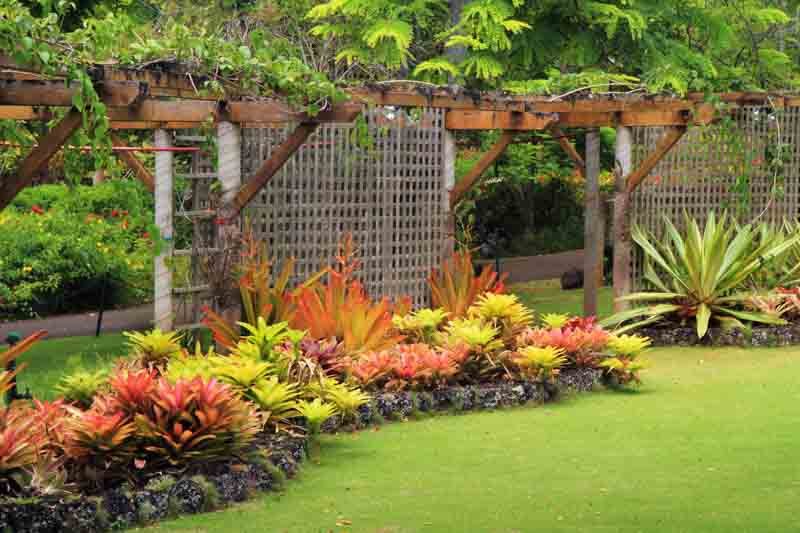
Bring the lush, exotic look of a tropical paradise to your sunny backyard with bold, colorful plants that thrive in full sun. A tropical-themed flower bed can serve as a showstopping focal point or a lush backdrop for outdoor entertaining areas.
Key players in a tropical bed include canna lilies, hibiscus, elephant ears, and lantana. These plants offer large, vibrant blooms and foliage that scream drama and luxury. Pair them with coleus for added color and texture, or use ornamental banana plants for towering greenery.
Since many tropical plants enjoy heat and humidity, ensure your flower bed has well-draining soil and regular watering during hot months. Incorporate decorative elements like tiki torches, stone borders, or ceramic pots to enhance the island vibe. With the right design, your yard will feel like a resort getaway.
5. Raised Flower Bed for Full Sun
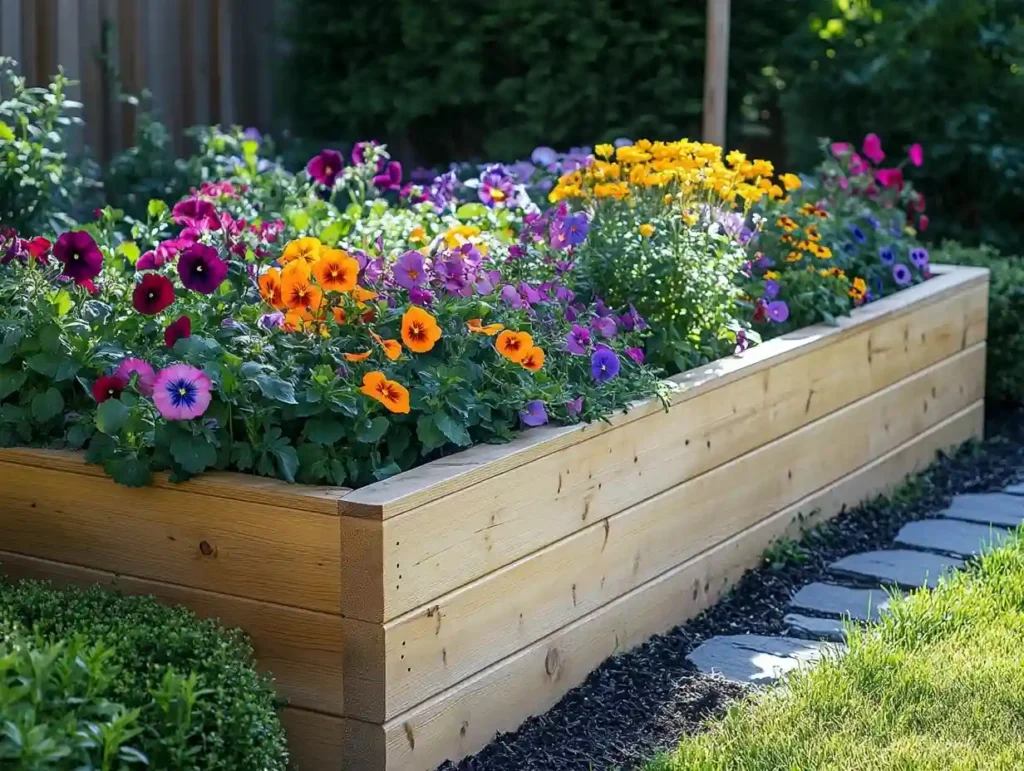
Raised flower beds are a practical and attractive solution for gardeners dealing with poor soil, drainage issues, or back problems. When located in a full sun area, these beds allow you to grow a wide range of colorful flowers in optimal conditions.
Annuals like zinnias, marigolds, cosmos, and petunias thrive in raised beds exposed to sun all day. You can also incorporate compact perennials like coreopsis or blanket flower for low-maintenance color. Mix tall and trailing varieties to create visual layers.
Use untreated wood, brick, or stone to build your raised bed and ensure it drains properly. Raised beds warm up earlier in the season, giving your plants a head start. They’re also easier to maintain and weed, making them a great choice for beginners and seasoned gardeners alike.
6. Formal Symmetry Bed Design

For those who love a polished, sophisticated look, a formal flower bed layout with symmetrical design elements is ideal. Full sun locations allow your structured planting plan to shine, especially when paired with evergreen accents or geometric borders.
Plants like boxwoods, snapdragons, and petunias work well in this style. Boxwoods can be trimmed into tidy shapes and act as a green framework for brightly colored annuals. Use flowers in matching rows or mirrored patterns for symmetry.
Keep spacing and alignment precise to achieve a professional look. A gravel path or low hedge can further define the shape of the bed. This style is perfect for front yards or entrances where you want to make a strong visual impression.
7. Color-Themed Flower Bed
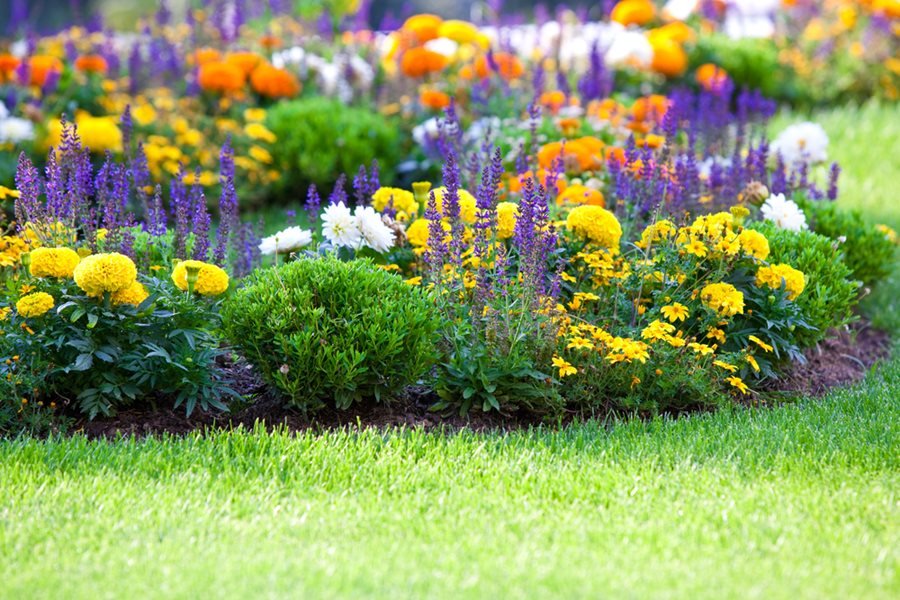
Choosing a specific color palette for your flower bed adds visual harmony and a designer touch to your garden. Full sun beds can handle the brightest, most vivid blooms, so why not go bold with a red or purple color scheme?
For an all-red bed, try geraniums, red salvia, celosia, and daylilies. For a calming purple theme, use lavender, salvia, verbena, and allium. Color-themed beds are especially impactful when placed where they can be viewed from a patio or window.
Incorporate foliage in varying shades of green, silver, or variegated tones to break up the color and add depth. Group plants in threes or fives for a more natural look, and consider your backdrop (fence, siding, or hedge) to ensure the colors pop.
8. Sunflower Showcase
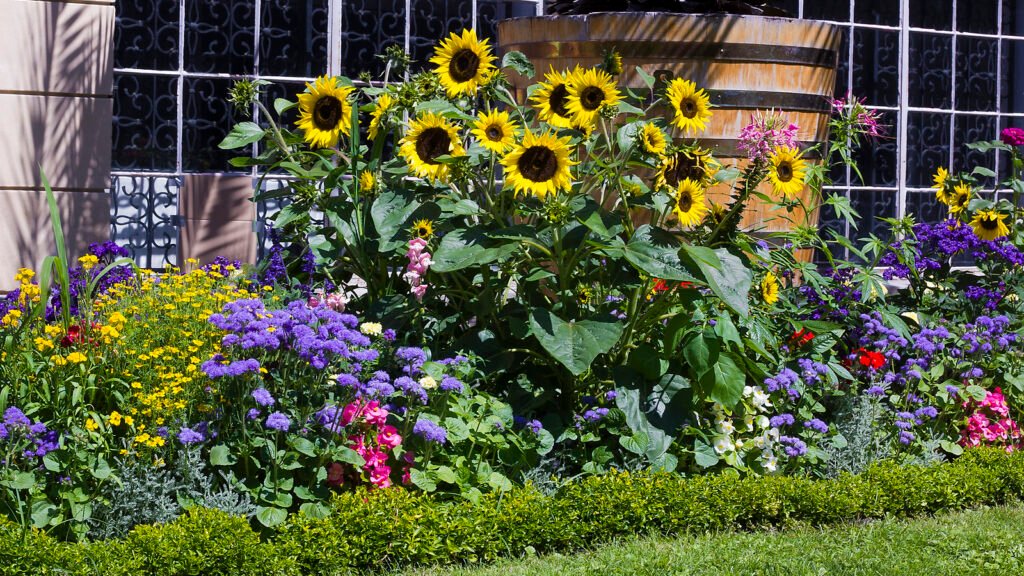
If you love cheerful, towering flowers that follow the sun, a sunflower-themed flower bed is a delightful choice. Sunflowers thrive in direct sunlight and offer a charming country or rustic appeal.
You can plant different varieties of sunflowers—tall, dwarf, branching, or multi-colored—to create height and variety. Pair them with zinnias, cosmos, or snapdragons to add color and fill in lower layers of the bed.
Sunflowers make excellent backdrops for vegetable gardens or border fences. Be sure to stake tall varieties to prevent wind damage and space them out for proper airflow. Their large seed heads also attract birds, adding more life to your garden.
9. Rock Garden Meets Flower Bed
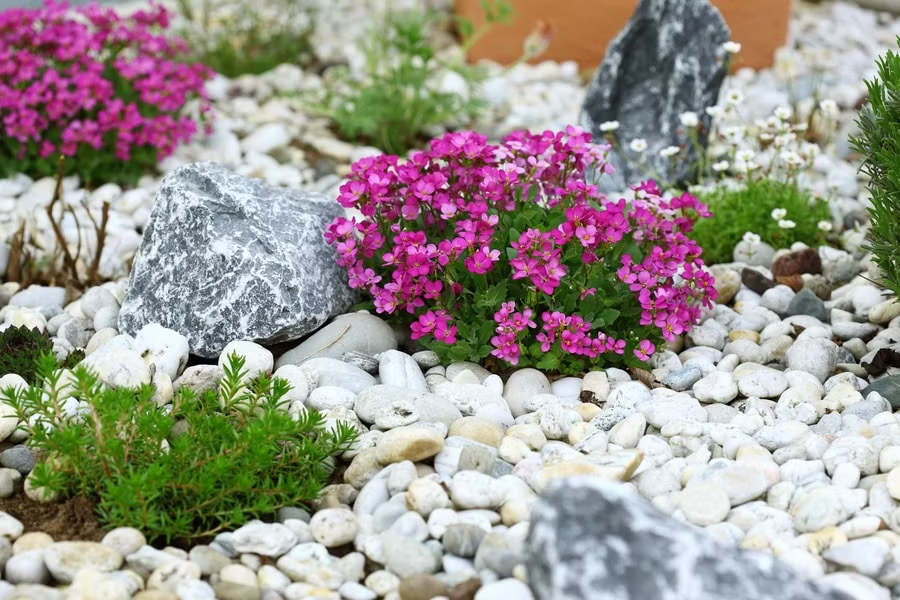
Combine the textures of stone and blooming plants by creating a rock garden-style flower bed. This design suits full sun locations beautifully, especially if you’re dealing with a sloped or uneven area.
Plants like portulaca, creeping thyme, hens and chicks, and dianthus work well among rocks and gravel. Their low-growing, spreading habits look natural nestled between stones and require little maintenance once established.
Arrange your rocks first to create structure and elevation, then fill in gaps with flowering plants and drought-tolerant groundcovers. This type of bed also benefits from excellent drainage, so be sure to amend the soil with sand or grit if necessary.
10. Mediterranean-Inspired Bed
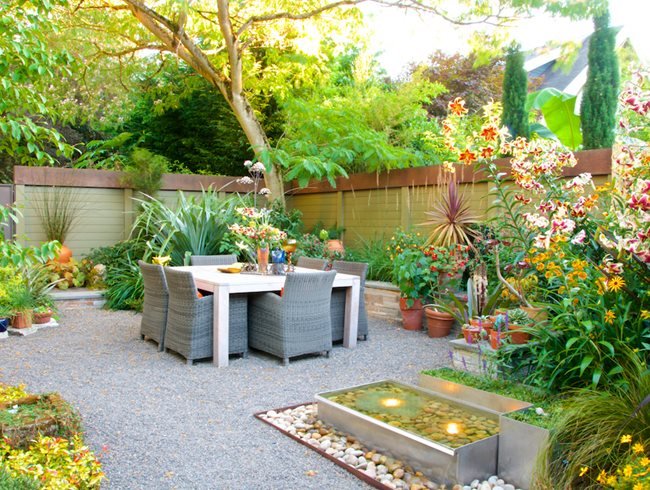
A Mediterranean-style flower bed captures the essence of sunny, seaside landscapes with fragrant herbs and soft-colored flowers. These beds thrive in hot, dry conditions and offer a relaxed, timeless look.
Consider planting rosemary, lavender, sage, oregano, and daisies. These plants offer lovely scents and attract pollinators while remaining low maintenance. Pair with stone edging or terracotta pots to complete the look.
Add crushed gravel or a winding path for a European garden feel. Mediterranean beds are a perfect fit for courtyard gardens, patios, or side yards with ample sun. They’re also great for incorporating edible and ornamental plants in one space.
11. Edible Flower Bed

Why not combine beauty with function by planting an edible flower bed? Full sun is perfect for many flowering herbs and edible blooms that add color to your garden and flavor to your meals.
Plant nasturtiums, calendula, chives, chamomile, and violets. These flowers not only thrive in the sun but are also completely safe to eat. Nasturtiums, in particular, offer vibrant blooms and peppery leaves that work great in salads.
To design your edible flower bed, use raised beds or border gardens near the kitchen or patio. Incorporate herbs like basil and thyme to round out your planting. With a little planning, you’ll enjoy both a visual feast and a literal one.
12. Monochromatic White Garden Bed
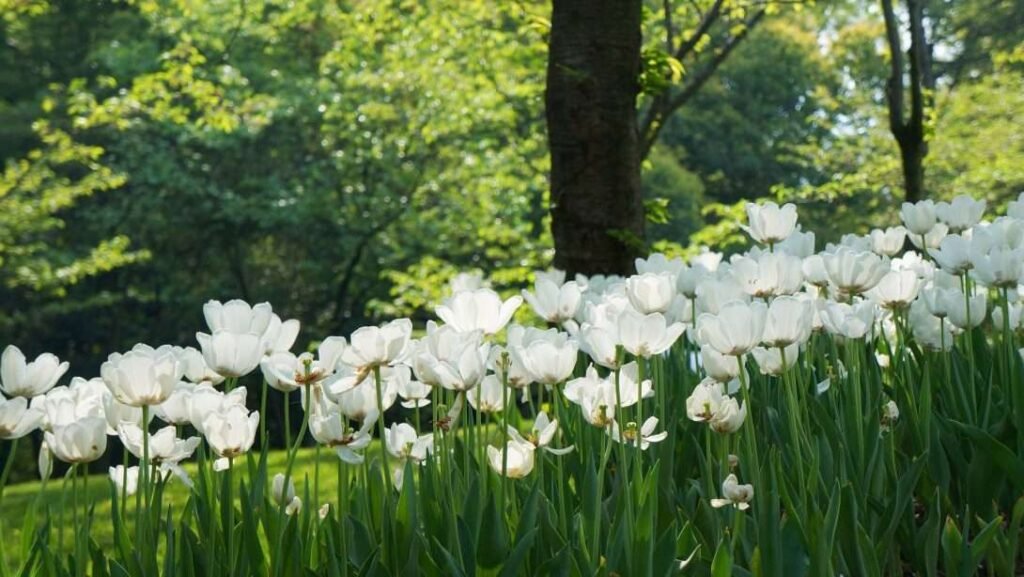
A monochromatic white flower bed in full sun can be strikingly elegant, offering a clean and serene look that stands out in bright daylight. White blooms can also create a moon garden effect, glowing softly in the evening.
Choose sun-loving white flowers like petunias, phlox, alyssum, shasta daisies, and vinca. Layer in silver or gray foliage such as dusty miller or artemisia for added depth and contrast.
A white garden bed works beautifully alongside walkways, patios, or seating areas. It brings a cooling, sophisticated vibe to sunny spots, and its timeless look suits both classic and modern landscaping styles.
13. Native Wildflower Bed
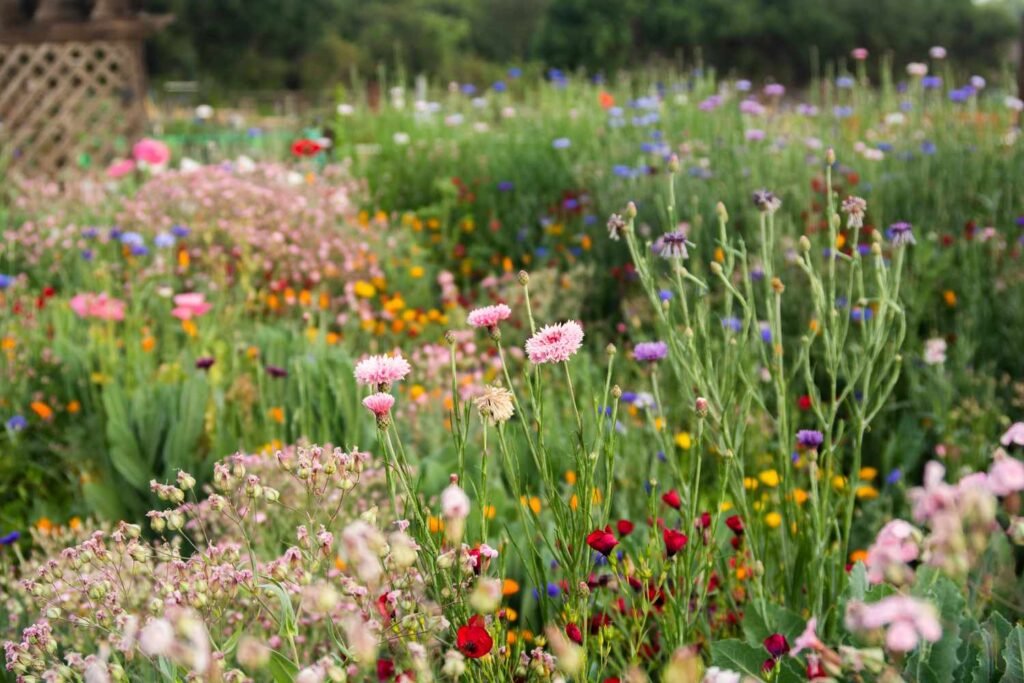
Using native wildflowers in your sun-filled flower bed is an excellent way to promote biodiversity while reducing maintenance. Native plants are naturally adapted to your region’s sun, soil, and rainfall conditions.
Common full-sun wildflowers include black-eyed Susan, purple coneflower, coreopsis, and blazing star. These plants support local pollinators and wildlife, often blooming in waves through the growing season.
To create a wildflower bed, prepare the soil by removing turf and adding compost. Scatter seeds or plant starts in drifts for a natural look. Over time, this type of garden will become more self-sustaining, requiring less input and providing more beauty year after year.
14. Modern Minimalist Bed
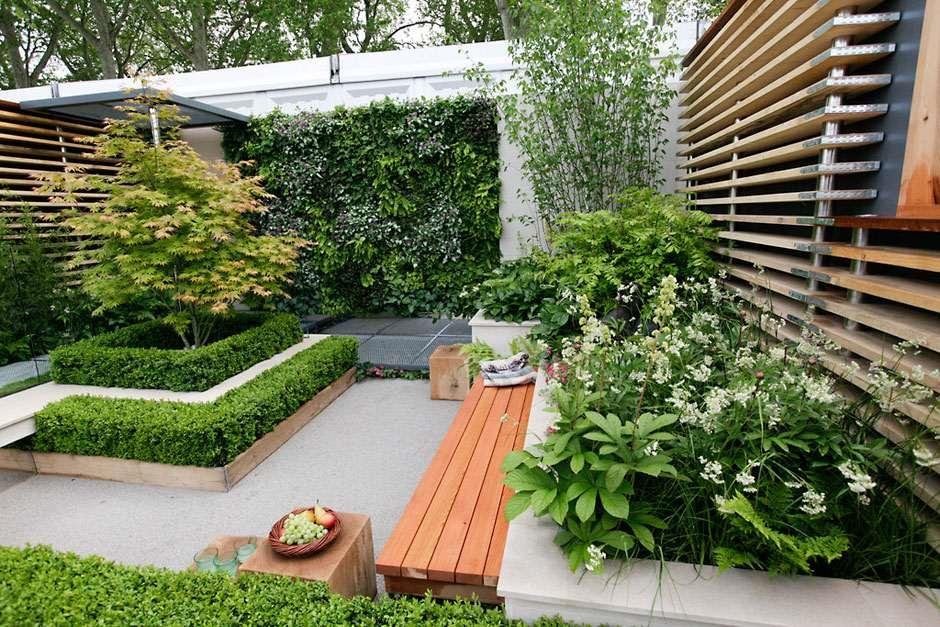
A modern minimalist flower bed features clean lines, a restrained color palette, and an emphasis on form and texture over riotous color. These designs thrive in full sun when planted with sculptural, sun-tolerant varieties.
Try ornamental grasses, agapanthus, lavender, and white coneflowers. Use repetition and spacing to create a rhythm and a sense of calm. Raised beds or metal edging can reinforce the geometric aesthetic.
Minimalist beds are perfect for urban gardens or contemporary homes. They require less maintenance than high-color beds but still deliver striking impact through thoughtful design and structural plantings.
15. Seasonal Rotation Flower Bed
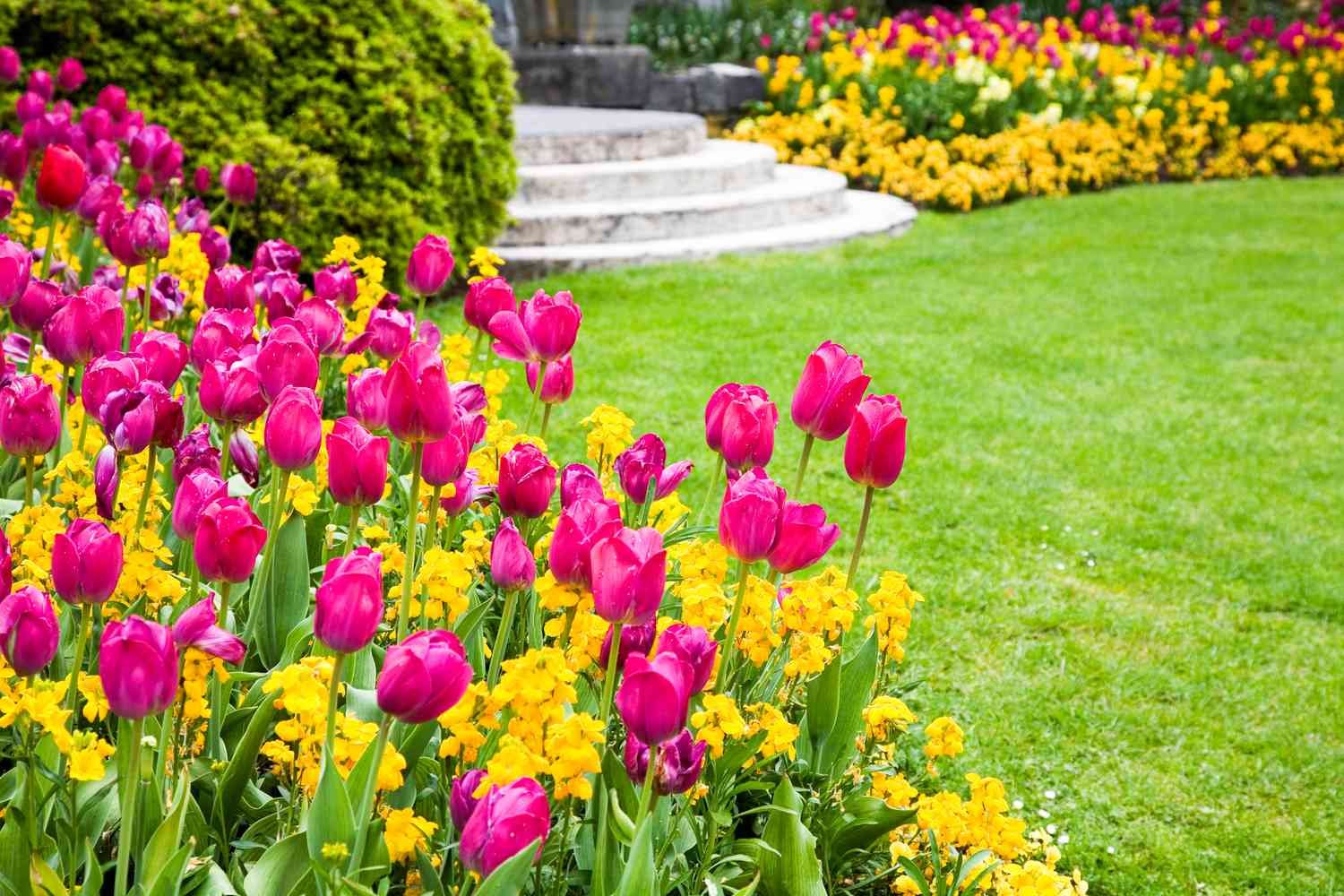
For dynamic curb appeal year-round, consider designing a full sun flower bed with seasonal rotation in mind. This approach ensures your garden always has something blooming, no matter the time of year.
Start with spring bulbs like tulips and daffodils, then transition to summer bloomers like zinnias and marigolds. In fall, plant mums and ornamental kale. Even winter can feature interest with evergreen shrubs or pansies in milder climates.
Plan your planting layout in layers, with room to swap annuals in and out as the seasons change. Using containers within the bed can also help you rotate plants easily. This method keeps your garden visually exciting and fresh throughout the year.
Wrapping Up
Designing a flower bed that thrives in full sun is both a creative opportunity and a gardener’s dream. With the right mix of sun-loving plants, thoughtful layout, and a touch of personal style, you can transform any sunny patch into a dazzling garden showcase. Whether you lean toward the bold drama of tropical blooms, the charm of cottage-style plantings, or the clean lines of modern minimalism, there’s a full sun flower bed idea to match your vision.
Each of these 15 ideas brings something unique to the table—encouraging biodiversity, adding curb appeal, or offering low-maintenance beauty. The key is to choose plants and layouts that reflect your lifestyle and enhance your outdoor space year-round.

